Process Improvements: Sessions and Show Floor Deliver That and More
PROCESSING PREVIEW
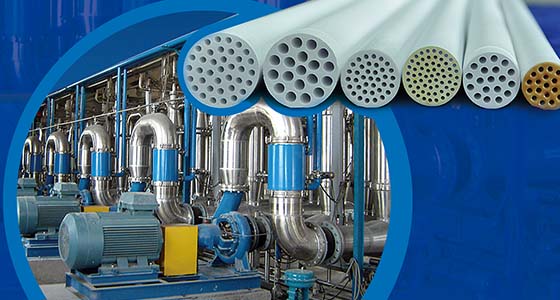
Symposia and other oral sessions on food processing and food engineering offer plenty of choices and potential conflicts in scheduling at the Annual Meeting. Here we try to summarize some of those that may interest readers of this column.
Session 014, “Nanotechnology Applications in Food Engineering and Processing: Recent Developments and Future Directions,” at 10:30 a.m. Sunday, June 22, includes presentations by Y. Yao on “Dendrimer-Like Polysaccharides for Food Applications,” N. Nitin on “Evaluating Stability and Release of Compounds in Nanoencapsulation Systems,” and C.I. Moraru on “Anodized Food Grade Surfaces With Nanoscale Topography for Minimizing Microbial Attachment.” Nanotechnology, of course, has been a fashionable topic for several years, and these papers seem to offer some practical applications.
In Session 037, “New Insights Into Innovative Processing Methods for Food Safety,” on Sunday, June 22, from 1:30 p.m. to 3 p.m., Sudhir Sastry of Ohio State University will discuss pulsed electric field (PEF) processing and measurement of physical properties during high pressure processing (HPP) conditions. Wade Yang of the University of Florida, Gainesville, will discuss reduction of allergens in shelled whole peanuts and peanut butter by pulsed ultraviolet (UV) light. Sevugan Palaniappan of Frito-Lay Inc. will discuss the benefits of PEF and HPP in developing safe, high-quality niche products. Michael A. Kempkes of Diversified Technologies Inc. will provide an overview of existing PEF systems and applications, and M. Walker of Evolution Fresh will offer insights into trends and applications of nonthermal processing methods. Applying newer technologies to allergen reduction is an exciting possibility.
Session 78, “Advances in High Pressure Processing: Case Studies in Applications and Commercialization for Food Safety and Defense” at 8:30 a.m. Monday, June 23, includes presentations by V. Balasubramanian on “Principles and Applications of Pressure-Assisted Thermal Processing;” Chris Doona on “The Enhanced Quasi-chemical Kinetics Model for the Inactivation of Listeria monocytogenes and Bacillus amyloliquefaciens Spores by High Pressure Processing;” C. Tonello Samson on “High Pressure Processing for Commercial Listeria-Free RTE Meat Products;” and D.F. Schaffner on “Using FDA’s Food Defense Builder Program to Create Company-Specific Programs to Combat Food Fraud, Food Adulteration, and Inferences From Food Processing-Site Food Defense Training Sessions.”
Session 82, “Engineering Digestion: Multiscale Approaches to Study Food Digestion, at 8:30 a.m. Monday, June 23, has papers by M. Wickham on “Industrial Relevance of Bioaccessibility and In Vitro Models of Digestion;” G. Bornhorst on “Gastric Digestion of Foods: Importance of Food Properties on Digestive Behavior;” S. Bakalis speaking on the session title topic; and C. Mills on “Multiomics Approaches to Studying the Digestion of Foods and Food Allergens.” The modeling of digestion has become a hot topic in food engineering, drawing upon familiar skills in simulation.
In Session 099, “Processing Control Measures for Salmonella in Low-Moisture Foods,” on Monday, June 23, from 10:30 a.m. to noon, S. Jeong of Michigan State University will describe models for thermal inactivation of Salmonella in low-moisture foods; Christina Stam of the U.S. Food and Drug Administration (FDA) will discuss the impact of temperature and humidity on the persistence of Salmonella during long-term storage of teas and spices; Tatiana Guzun-Cojocaru of ETIA will discuss control of steam condensation during continuous thermal processing of low-moisture foods such as spices; and S. Keller of the FDA will discuss development of a model based on temperature and water activity that predicts Salmonella destruction during an extrusion process. Sterilization of low-moisture foods is a challenge, but it is important for the nut and spice industries.
In Session 147, “Is High-Pressure Processing an Alternate to Inactivate Clostridium botulinum Spores?” on Monday, June 23, from 1:30 p.m. to 3 p.m., Mike Peck of the Institute for Food Research will describe the resistance properties of C. botulinum Groups I and II; N.R. Reddy of the FDA will discuss the inactivation kinetics of C. botulinum spores exposed to combinations of high pressures and temperatures; Sandra Olivier of CSIRO Animal, Food and Health Sciences will discuss research in Australia on inactivation of C. botulinum spores by high-pressure thermal processing; and Hosahalli S. Ramaswamy of McGill University will discuss research in Canada on high-pressure processing of C. botulinum spores, including comparison of the resistance of 10 strains of C. botulinum and determination of the high-pressure, high-temperature destruction kinetics of the most resistant strain.
In session 153, “Innovations in Science and Technology for Food Quality, Safety, and Health Over the Past 25 Years,” on Monday, June 23, from 1:30 p.m. to 3 p.m., Daryl Lund of the University of Wisconsin-Madison, Dennis R. Heldman of Ohio State University, and Roger A. Clemens of the University of Southern California and Horn Co. will discuss the title topic.
--- PAGE BREAK ---
In session 154, “Innovative Multi-Hurdle Technology Concepts: A Key to Bacterial Spore Control,” on Monday, June 23, from 1:30 p.m. to 3 p.m., P. Setlow of the University of Connecticut Health Center will discuss how high hydrostatic pressure rapidly germinates spores in foods and lowers their resistance. Christopher Doona of the U.S. Army Natick Soldier RD&E Center will discuss how high pressure processing, cool plasma, and chorine dioxide inactivate bacterial spores and contribute to safe, commercially sterile, shelf-stable food products with improved product quality. Kai Reineke of the Leibniz Institute for Agricultural Engineering will discuss how nonthermal atmospheric plasma inactivates endospores on heat-sensitive surfaces, and Erika Georget of the German Institute of Food Technologies will discuss use of high-pressure homogenization to inactivate bacterial spores and achieve continuous sterilization of particle-free, pumpable food matrices.
Session 189, “Novel and Emerging Technologies for Dairy Foods Processing,” on Tuesday, June 24, at 8:30 a.m., includes papers by H. Singh on “Designing Dairy-Based Nano-Encapsulation Systems for the Delivery of Bioactive Materials,” M. O’Donovan on “Whey Value Optimization Using Encapsulation Technology,” and J.M. Goddard on “Nanocomposite Materials for Dairy Processing.”
Session 195, “Innovative Processing Methods for Pasteurization and Sterilization,” at 8:30 a.m. Tuesday, June 24, includes presentations by R. Ruan on “CHIEF/Pulse Electric Field Technology: An Innovative Nonthermal Pasteurization System;” V. Balasubramanian on “Pressure-Ohmic Thermal Sterilization: A Novel Method for Sterilization of Low-Acid Foods;” and H. Feng on “Microbial Inactivation by Power Ultrasound for Enhanced Food Safety.” Power ultrasound probably deserves more attention than it has received so far.
In Session 215, “Validating High Pressure Processing for Juice Safety,” on Tuesday, June 24, from 10:30 a.m. to noon, John Larkin of the FDA will discuss what would be involved for high-pressure processing of juice products to meet the FDA’s juice HACCP regulation; M. Walker of Starbucks Coffee will discuss the critical parameters for validation testing to meet the requirements of the juice HACCP regulation; and Alvin Lee of the IIT IFSH Center for Processing Innovation will address what a validation study based on the juice HACCP regulation would look like, including processing conditions, bacterial strain selection, pathogens at risk, challenge study, and potential research gaps.
Session 230, “Innovations in Nonthermal Processing of Dairy Foods,” at 1:15 p.m. on Tuesday, June 24, will have presentations by B. Zisu on “Power Ultrasound: An Innovative Approach to Tailoring the Functional Characteristics of Dairy Ingredients;” R. Buckow on “Opportunities and Challenges in Pulsed Electric Field Processing of Dairy Products;” H. Patel on “New Opportunities in the Dairy and Food Industry Through Applications of High Pressure Processing;” and F.M. Harte on “Applications of High Pressure Homogenization in Dairy.” While focused on dairy, this session is a good overview of newer processing technologies.
In session 232, “Ultraviolet Light for Food Plant Safety and ESL Applications,” on Tuesday, June 24, from 1:15 p.m. to 2:45 p.m., Tatiana Koutchma of Agriculture and Agri-Food Canada will discuss UV-C treatment of juices, milk, and liquid sugars, as well as use in air purifi cation, water disinfection, and surface treatment. Gail Barnes of Personify LLC will discuss turbulent-flow UV-C technology as a nonthermal milk treatment; Chris Rockett of Heraeus Noblelight will discuss design, measurement, and validation to establish best practices for UV surface disinfection in food processing applications; and Troy Smith of Radiant UV will discuss use of UV technology for processing control of bacterial, fungal, and viral contamination.
In session 076, “FTIR and NIR Spectroscopy in Process Control Systems: Rapidly Assessing the Quality of Foods,” on Monday, June 23, from 8:30 a.m. to 10 a.m., Luis E. Rodriguez-Saona of Ohio State University will discuss how portable FT-IR spectrometers can be used for assessment of food tampering and K. Mallikarjunan of Virginia Tech will discuss use of Fourier-transform infrared (FTIR) spectroscopy for rapid assessment of food quality.
Do not forget to visit the poster sessions, with too many offerings to list here, but always with the opportunity for serendipity and the chance to meet with and mentor students and other authors.
I thank my colleague, Neil Mermelstein, for his assistance with this column.
--- PAGE BREAK ---
Exhibitor Information
Brief descriptions of some of the processing-related exhibits at the Food Expo follow.
Miniature-scale research and development systems for food, beverage, oils, and pharmaceuticals are designed to precisely duplicate full-scale manufacturing processes. This allows for fast and easy product formulation testing that requires fewer raw materials and thus saves time, space, and money. The Armfi eld FT51 Continuous Inline Deaerator, which removes gas and air from raw materials, can perform both spray and disc deaeration. A touch screen control interface displays flow diagrams and product status while processing. Armfield Limited, www.explorearmfi eld.com, Booth 4229
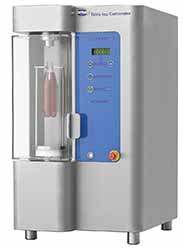 Small-scale liquid process equipment for laboratory and pilot plant applications simulates industrial processes and allows the user to save time and money by efficiently conducting trials. OMVE supplies both standard equipment and solutions that are custom-made for specific requirements and needs. The company is also capable of integrating other technologies in its modular set-ups. OMVE’s standard range includes heat treatment, carbonation, homogenization, deaeration, evaporation, aeration, crystallization, batch processing (blending, batch cooking, buffering, and fermentation) and hygienic and aseptic filling and closing. Highlights of the company’s Food Expo display include the highly flexible HT220 Laboratory HTST/UHT Pilot Plant and the CF121 Bench-Top Carbo-Fill® Carbonator-Filler, which carbonates water or post-mix drinks quickly and at a highly accurate and reproducible CO2 level. OMVE, www.omve.com, Booth 2224
Small-scale liquid process equipment for laboratory and pilot plant applications simulates industrial processes and allows the user to save time and money by efficiently conducting trials. OMVE supplies both standard equipment and solutions that are custom-made for specific requirements and needs. The company is also capable of integrating other technologies in its modular set-ups. OMVE’s standard range includes heat treatment, carbonation, homogenization, deaeration, evaporation, aeration, crystallization, batch processing (blending, batch cooking, buffering, and fermentation) and hygienic and aseptic filling and closing. Highlights of the company’s Food Expo display include the highly flexible HT220 Laboratory HTST/UHT Pilot Plant and the CF121 Bench-Top Carbo-Fill® Carbonator-Filler, which carbonates water or post-mix drinks quickly and at a highly accurate and reproducible CO2 level. OMVE, www.omve.com, Booth 2224
Precision metering pumps and dispensers for lab, pilot plant, process, and production fluid control are available from Fluid Metering Inc. The patented CeramPump© valveless design has only one moving part in the fluid path and inert, sapphire hard, ceramic internals to allow for the accurate dispensing of colors, flavors, nutrients, enzymes, preservatives, and clean-in-place fluids. At the Food Expo, the company’s interactive booth will feature programmable dispensers as well as miniature pumps suitable for OEM instrumentation. Fluid Metering Inc., www.fluidmetering.com, Booth 4757
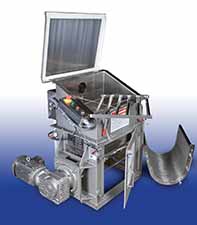 Product conditioner, the newest addition to American Process Systems’ complete line of mixing equipment, serves to de-lump and de-agglomerate product prior to mixing. It boasts easily removable screens and hinged side doors for easy cleaning. Options include a Hand Add Station and E-Stop Push Button Station. Another recently introduced item that will be on display at the Food Expo is the OptimaBlend™ Fluidizing Paddle Blender, which mixes five times faster and with less degradation than a ribbon blender, delivering high mix efficiencies with low coefficient of variation. Units are available in carbon steel, stainless steel, and sanitary construction for a wide variety of solids-to-solid and solids-to-liquid blending applications. American Process Systems, www.apsmixers.com, Booth 5517
Product conditioner, the newest addition to American Process Systems’ complete line of mixing equipment, serves to de-lump and de-agglomerate product prior to mixing. It boasts easily removable screens and hinged side doors for easy cleaning. Options include a Hand Add Station and E-Stop Push Button Station. Another recently introduced item that will be on display at the Food Expo is the OptimaBlend™ Fluidizing Paddle Blender, which mixes five times faster and with less degradation than a ribbon blender, delivering high mix efficiencies with low coefficient of variation. Units are available in carbon steel, stainless steel, and sanitary construction for a wide variety of solids-to-solid and solids-to-liquid blending applications. American Process Systems, www.apsmixers.com, Booth 5517
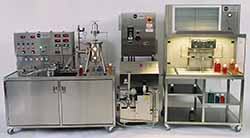 Silver show specials will be available from MicroThermics to mark the company’s 25th anniversary. UHT/HTST lab processors deliver easy, affordable process accuracy. MicroThermics specializes in scaling thermal processes up and down; its thermal process matching technology has made it a popular choice among clients working to develop products in categories including juices, nutraceuticals, dairy beverages, soy milk, yogurt, puddings, and more. MicroThermics’ lineup of products and services includes tubular, plate, steam injection, and microwave heating; homogenizers; ultra-clean fill hoods; touch screens; data acquisition; custom hold tubes; and real-time, online tech support. MicroThermics Inc., www.microthermics.com, Booth 2335
Silver show specials will be available from MicroThermics to mark the company’s 25th anniversary. UHT/HTST lab processors deliver easy, affordable process accuracy. MicroThermics specializes in scaling thermal processes up and down; its thermal process matching technology has made it a popular choice among clients working to develop products in categories including juices, nutraceuticals, dairy beverages, soy milk, yogurt, puddings, and more. MicroThermics’ lineup of products and services includes tubular, plate, steam injection, and microwave heating; homogenizers; ultra-clean fill hoods; touch screens; data acquisition; custom hold tubes; and real-time, online tech support. MicroThermics Inc., www.microthermics.com, Booth 2335
--- PAGE BREAK ---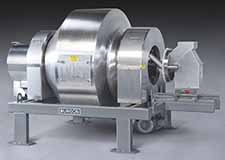 Rotary batch mixer from Munson Machinery blends dry dairy ingredients and other bulk food and beverage products in ratios to one ppm in two to three minutes, evacuates the batch, and has the capacity to sanitize rapidly with no tools. The mixer’s features include a retractable inlet for rapid washdown, a stationary discharge, and a rotating drum with proprietary mixing flights that tumble, turn, and fold material gently. Nonfat dry milk, powdered eggs, dairy-based powders and other ingredients, and nondairy creamer are among the mixer’s applications. Munson also manufactures ribbon/paddle/plow blenders, fluidized bed mixers, veecone blenders, continuous rotary blenders, high intensity blenders, and a variety of size reduction equipment. Munson Machinery, www.munsonmachinery.com, Booth 5313
Rotary batch mixer from Munson Machinery blends dry dairy ingredients and other bulk food and beverage products in ratios to one ppm in two to three minutes, evacuates the batch, and has the capacity to sanitize rapidly with no tools. The mixer’s features include a retractable inlet for rapid washdown, a stationary discharge, and a rotating drum with proprietary mixing flights that tumble, turn, and fold material gently. Nonfat dry milk, powdered eggs, dairy-based powders and other ingredients, and nondairy creamer are among the mixer’s applications. Munson also manufactures ribbon/paddle/plow blenders, fluidized bed mixers, veecone blenders, continuous rotary blenders, high intensity blenders, and a variety of size reduction equipment. Munson Machinery, www.munsonmachinery.com, Booth 5313
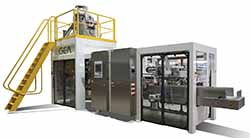 Engineering solutions from GEA can be applied in the development of new plants or retrofitting of existing systems. The company’s equipment range includes UHT plants, homogenizers, separators, evaporators, dryers, particulate processing systems, CIP systems, powder handling and packaging systems, and PET bottle filling lines. GEA’s new RBF-1000Li (Limited Intervention) powder filling system is highly automated with a design that offers complete control of bags from bag-present station to filling station; a deaeration station for improved bag stability; and automated neck stretching, heat-sealing, and weight checking. Weight data from the check-weigher functions to auto-tune the filling weights and maintain machine accuracy. GEA Group, www.gea.com, Booth 3119
Engineering solutions from GEA can be applied in the development of new plants or retrofitting of existing systems. The company’s equipment range includes UHT plants, homogenizers, separators, evaporators, dryers, particulate processing systems, CIP systems, powder handling and packaging systems, and PET bottle filling lines. GEA’s new RBF-1000Li (Limited Intervention) powder filling system is highly automated with a design that offers complete control of bags from bag-present station to filling station; a deaeration station for improved bag stability; and automated neck stretching, heat-sealing, and weight checking. Weight data from the check-weigher functions to auto-tune the filling weights and maintain machine accuracy. GEA Group, www.gea.com, Booth 3119
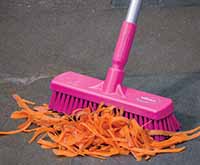 Color-coding products from Remco are now available in pink. The new color is available in almost 40 items, with products from both the Remco and Vikan lines. With the addition of pink, Remco and Vikan now have nine colors in their respective lines. Color-coding has applications in sanitation zones for a variety of food processing industries. Implemented correctly, it can help reduce the risk of cross-contamination by separating pathogens, allergens, and foreign contaminants and can decrease the likelihood of a recall. Remco Products, www.remcoproducts.com, Booth 1400
Color-coding products from Remco are now available in pink. The new color is available in almost 40 items, with products from both the Remco and Vikan lines. With the addition of pink, Remco and Vikan now have nine colors in their respective lines. Color-coding has applications in sanitation zones for a variety of food processing industries. Implemented correctly, it can help reduce the risk of cross-contamination by separating pathogens, allergens, and foreign contaminants and can decrease the likelihood of a recall. Remco Products, www.remcoproducts.com, Booth 1400
A major manufacturer of ceramic membranes, Jiangsu Jiuwu Hi-Tech, supplies microfiltration/ultrafiltration/nanofiltration element series, membrane modules, membrane pilots, and industrial membrane systems for the food and beverage industry and other industries. The company’s experience in the field of ceramic membrane application includes fermentation, yeast filtration concentration, hydrolysate clarification, enzyme filtration and concentration, wine filtration, concentration/purification of ingredients including whey and other food protein, fruit and vegetable juice clarification, and clean-in-place solutions recovery/reuse. Jiangsu Jiuwu Hi-Tech Co., www.jiuwu.com, Booth 3423
Steam batch sterilization system uses a natural process that kills pathogens without leaving residues while maintaining product quality. Imtech-Steri designs, produces, and installs customized pasteurization plants. Applications include dried fruits, nuts, seeds, herbs, and spices. Imtech-Steri, www.imtech-steri.ch, Booth 1306
 J. Peter Clark, Ph.D., CFS, Contributing Editor,
J. Peter Clark, Ph.D., CFS, Contributing Editor,
Consultant to the Process Industries, Oak Park, Ill.
[email protected]
